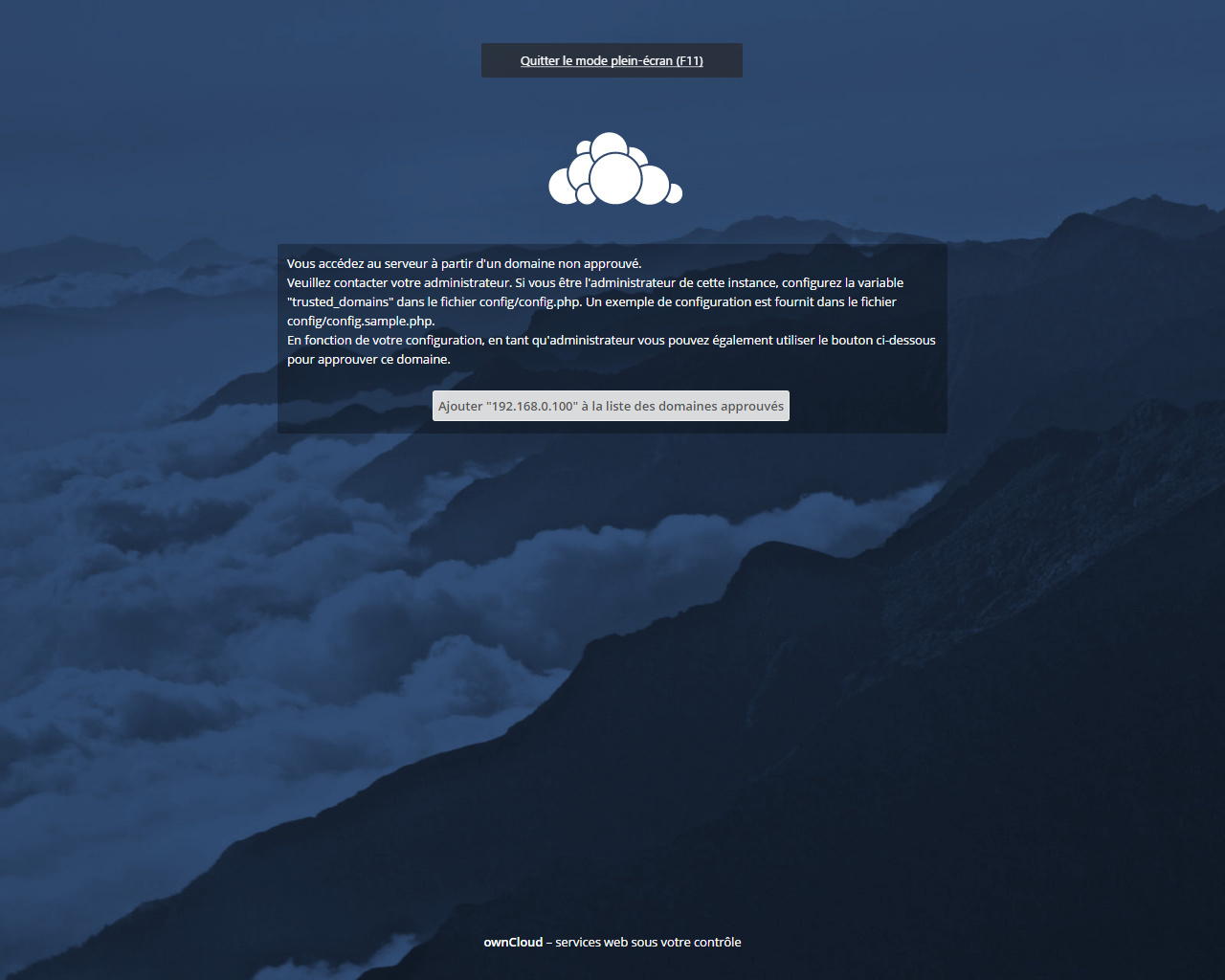
- #Bitnami owncloud enable https on local network how to
- #Bitnami owncloud enable https on local network password
#Bitnami owncloud enable https on local network password
OWNCLOUD_DATABASE_PASSWORD: Database password that ownCloud will use to connect with the database.OWNCLOUD_DATABASE_USER: Database user that ownCloud will use to connect with the database.OWNCLOUD_DATABASE_NAME: Database name that ownCloud will use to connect with the database.OWNCLOUD_DATABASE_PORT_NUMBER: Port used by MariaDB server.OWNCLOUD_DATABASE_HOST: Hostname for MariaDB server.OWNCLOUD_DATABASE_TYPE: Database type to use.OWNCLOUD_HOST: ownCloud host to configure internal paths.Default: OWNCLOUD_SKIP_BOOTSTRAP: Whether to skip performing the initial bootstrapping for the application. OWNCLOUD_EMAIL: ownCloud application email.OWNCLOUD_PASSWORD: ownCloud application password.OWNCLOUD_USERNAME: ownCloud application username.APACHE_HTTPS_PORT_NUMBER: Port used by Apache for HTTPS.APACHE_HTTP_PORT_NUMBER: Port used by Apache for HTTP.$ docker run -d -name owncloud -p 80:8080 -p 443:8443 \ -env OWNCLOUD_PASSWORD=my_password \ -network owncloud-tier \ -volume /path/to/owncloud-persistence:/bitnami \ bitnami/owncloud:latestĪvailable environment variables: User and Site configuration

This requires a minor change to the docker-compose.yml file present in this repository: Mount host directories as data volumes with Docker Compose Alternatively you can make use of volume plugins to host the volume data. To avoid inadvertent removal of volumes, you can mount host directories as data volumes. The ownCloud application state will persist as long as volumes are not removed. The above examples define the Docker volumes named mariadb_data and owncloud_data. Additionally you should mount a volume for persistence of the MariaDB data]( ). If the mounted directory is empty, it will be initialized on the first run. To avoid this loss of data, you should mount a volume that will persist even after the container is removed.įor persistence you should mount a directory at the /bitnami/owncloud path. If you remove the container all your data will be lost, and the next time you run the image the database will be reinitialized. $ docker run -d -name owncloud \ -p 8080:8080 -p 8443:8443 \ -env ALLOW_EMPTY_PASSWORD=yes \ -env OWNCLOUD_DATABASE_USER=bn_owncloud \ -env OWNCLOUD_DATABASE_PASSWORD=bitnami \ -env OWNCLOUD_DATABASE_NAME=bitnami_owncloud \ -network owncloud-network \ -volume owncloud_data:/bitnami/owncloud \ bitnami/owncloud:latestĪccess your application at Persisting your application $ docker volume create -name owncloud_data

The recommended way to get the Bitnami ownCloud Docker Image is to pull the prebuilt image from the Docker Hub Registry. Subscribe to project updates by watching the bitnami/owncloud GitHub repo. Learn more about the Bitnami tagging policy and the difference between rolling tags and immutable tags in our documentation page. Supported tags and respective Dockerfile links

You can use DOCKER_CONTENT_TRUST=1 to verify the integrity of the images. All Bitnami images available in Docker Hub are signed with Docker Content Trust (DCT).All our images are based on minideb a minimalist Debian based container image which gives you a small base container image and the familiarity of a leading Linux distribution.Bitnami containers, virtual machines and cloud images use the same components and configuration approach - making it easy to switch between formats based on your project needs.With Bitnami images the latest bug fixes and features are available as soon as possible.Bitnami closely tracks upstream source changes and promptly publishes new versions of this image using our automated systems.You are encouraged to change the insecure default credentials and check out the available configuration options in the Environment Variables section for a more secure deployment. You may not use this file except in compliance with the License.Warning: This quick setup is only intended for development environments. Licensed under the Apache License, Version 2.0 (the "License") If you have an issue related to one of our containers, please go to its specific repository in our GitHub organization and report an issue there. If you have an issue related to one of our charts, please go to the repository and report an issue there. You can have important information about a Cloud provider: There is an updated documentation at where you can find tutorials and FAQs. If the documentation didn't help you, we strongly suggest you to check the resolved issues and the on going ones before addressing an issue.
#Bitnami owncloud enable https on local network how to
Popular applications, provided by Bitnami, ready to launch on:īefore continuing, please review our useful guides about how to configure and use your application in our documentation


 0 kommentar(er)
0 kommentar(er)
